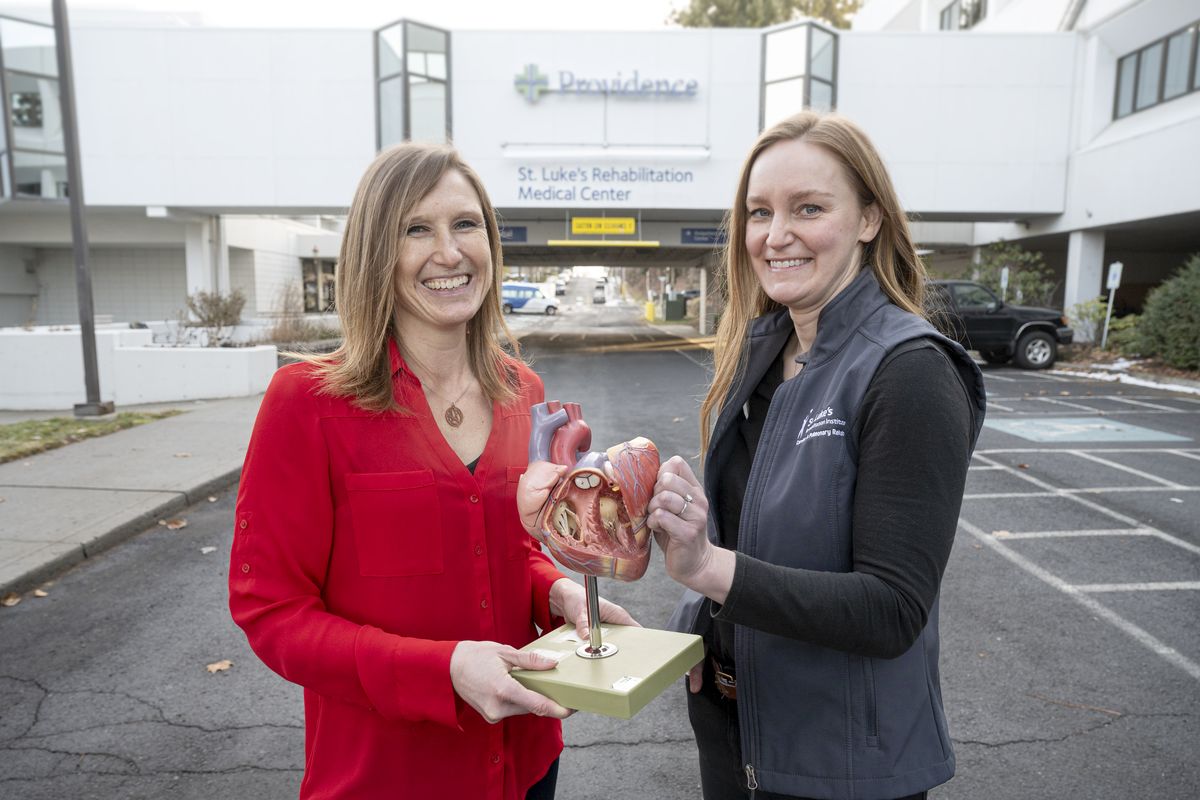Matters of the heart: Providence St. Luke’s wants more people to know about its cardiac rehab support

Less than 10% of adults with heart failure get help in a supervised cardiac rehabilitation setting, says an American Heart Association estimate.
Sometimes, it’s that people don’t know this care is available after a heart attack, stroke or similar issue, say providers in the Providence St. Luke’s Rehabilitation Medical Center’s cardiac rehabilitation outpatient program.
With a doctor’s referral, patients can attend the program for up to 36 sessions depending on insurance, said Shaina Hicks, its cardiac and pulmonary services manager.
“Cardiac rehab is a comprehensive, medically supervised program that’s not just based on exercise – even though exercise is a cornerstone – but it’s more an education program with an emphasis on disease prevention and management, behavior modification and support,” Hicks said.
“Some of that education is around the anatomy and physiology of the heart, knowing where they are at with disease risk factors, weight management, stress management and depression.”
The patients come for one hour, generally three times a week, while others choose two times a week. Most insurances cover the outpatient care for a heart condition or issue, which can include a heart attack, chest pain, congestive heart failure, coronary artery bypass surgery, heart valve replacement or repair, a stent or angioplasty.
“We also see peripheral artery disease patients,” Hicks said.
It offers supervised exercise and group medical education about healthy habits. Sessions are offered five days a week, with several group classes throughout the day. There’s an initial one-on-one evaluation with a clinician.
The patients as they start are evaluated on exercise ability, endurance and strength, emotional well-being and dietary needs. The classes from 10-20 minutes cover a topic, but they also become a group support.
Hicks said studies indicate that underuse of cardiac rehab programs occurs particularly among women and minorities. Some barriers might be lack of referrals if doctors are unaware, or perhaps patients get a referral and don’t follow through.
“Maybe they don’t have health insurance or they have work or have home duties that prevent them from coming, or transportation is an issue,” she said.
A doctor’s referral is required, so if someone sees a nurse practitioner or physician’s assistant, those providers can refer with a co-signature by a physician.
Laura Wambold, clinical exercise physiologist, said patients at the beginning complete a short walk as a baseline for cardiovascular endurance. During sessions, people use equipment such as a treadmill, seated bike or seated steppers at the facility.
“While they’re exercising, we’re monitoring them and watching their blood pressure, heart rate,” Wambold said. “We also check on how they’re feeling at home. That’s part of the educational one-on-one. Discussing what they have access to at home, what they might enjoy, what home exercises they can do to ease into that routine and how hard to push their heart comfortably.”
Other program topics include emotional health, stress management and depression. Registered dieticians cover better nutrition such as heart-healthy eating, lower sodium and better fat sources.
Overall, Wambold said the providers see growth from the time that patients enter the program being somewhat timid about activity to gaining more confidence.
“They can start to push their heart again,” Wambold said. “Some people try different machines in cardiac rehab; sometimes they purchase a piece of equipment for the home or they own one and dust it off and start using it.”
Others who prefer to exercise with a group for motivation and support get a gym membership or do a walking program such as Silver Sneakers.
Workout examples or low-impact options are offered in the program, such as how to do seated exercises, Hicks said.
Providers in the program regularly review the goals set with patients, and those plans are signed off by a physician.
“We follow up at least every 30 days to see how they’re doing with exercise, nutrition and what goals we set on the initial session, or do we need to set new goals or more specific goals?” Hicks added.
Primary caregivers are included in that collaboration.
“We really do partner with the patients’ providers, who might be a primary caregiver or a heart physician. If we see something they might be concerned about, we let them know and ask, ‘Do you have any recommendations or concerns?’ ”
If a patient has smoked, resources are offered for tobacco cessation programs that are offered separately in the Spokane area.
St. Luke’s typically has about 40 to 50 new cardiac rehab patients a month, with ages ranging from 13 to 101. Most are in their 50s to 80s.
Hicks said word of mouth helps bring in new patients, when someone tells a friend about the peer support, cardiac rehabilitation and education. Patients are encouraged to share heart-healthy information they’ve learned with people they know.
The reward for caregivers is seeing patients’ fears decrease.
“That’s the biggest thing,” Hicks said. “If they had a heart attack, maybe just walking the dog, and they don’t know what activities they can do or is this going to happen again?
“This is about building their confidence while they’re here, giving them the tools, helping them understand the disease state at the time and how to live a healthier lifestyle, then seeing them make that change and improve.”
Wambold added that patients reach a comfort level in a monitored setting to bridge that gap between a heart condition and a safe return to activity.
For more information, call Providence St. Luke’s main line at (509) 473-6000 and search online at providence.org/locations/wa/st-lukes/cardiac-rehabilitation.